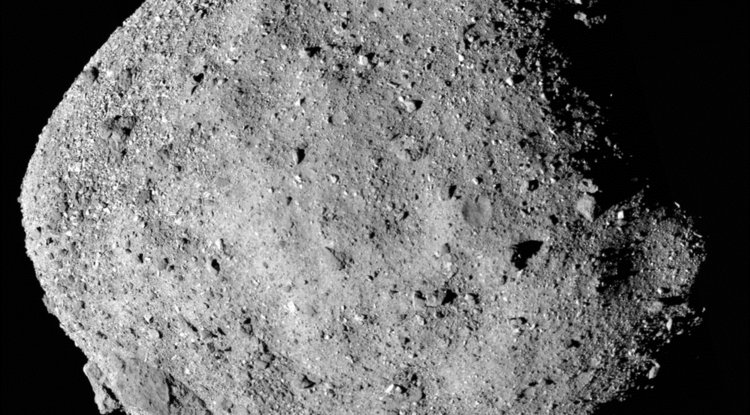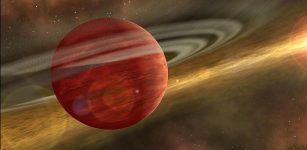Study Of Bennu Asteroid – First Surprising Results
Eddie Gonzales Jr. – MessageToEagle.com – After a two-year voyage, the OSIRIS-REx asteroid sample return mission arrived at Bennu, an asteroid the size of the pyramid at Giza, in December.
“We didn’t know what it looked like, and that’s called exploration,” Phil Christensen, mission co-investigator, lead of the spacecraft’s OTES instrument, and Regents’ Professor in the School of Earth and Space Exploration at ASU, said in a press release.

First surprise: Bennu is a craggy ball, with some boulders the size of houses. Scientists thought taking the sample return was going to be like plucking something from a football field. It’s not.
“It’s going to be like landing between two parked cars in a parking lot,” Christensen said.
That problem is a ways off. The asteroid will be studied for a year before the craft touches down — briefly — on the surface and grabs four pounds of material, which will be sent back to Earth to crash into the Utah desert in 2023.
“The beauty of this mission is … we get to bring rocks back,” Christensen said.
Operating the spacecraft is breaking records — for orbiting a body this small, and for orbiting so closely. The spacecraft is flying above the asteroid at the height of the Empire State Building.
“The navigation on this mission is amazing,” Christensen said.
“What’s interesting about these meteorites is that they contain water,” said Vicky Hamilton, a co-investigator on the OSIRIS-REx mission, lead for the OTES spectrum analysis team and a planetary geologist at the Southwest Research Institute in Boulder, Colorado.
It’s not in liquid form, but it’s in the minerals — up to 2 percent in some cases. Bennu’s parent body had significant interactions with water, Hamilton said.
Scientists think asteroids may contain clues to the origins of life. The small, rocky bodies have never been explored before. No one knows how they form, how they behave or what’s on them.
Much more data will be collected over the next calendar year. The samples will be studied by scientists for decades.
Written by Eddie Gonzales Jr. – MessageToEagle.com Staff










